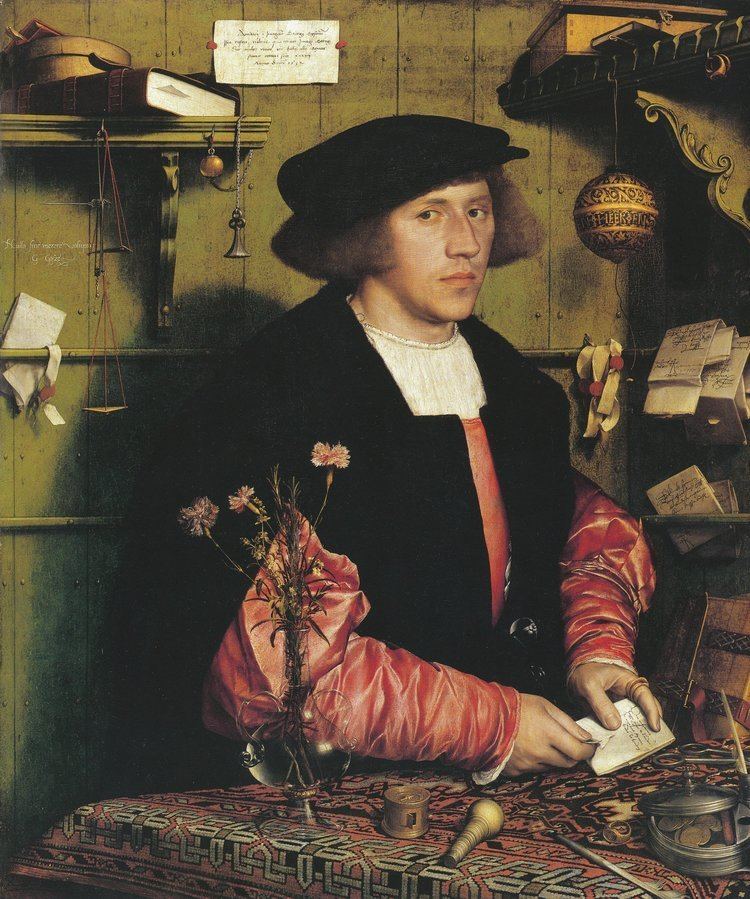Name Georg Giese | ||
 | ||
Died February 3, 1562, Gdansk, Poland | ||
Georg Giese (Gisze according to the title of the Holbein painting; Danzig (Gdańsk), 2 April 1497 – Danzig, 3 February 1562) was a Hanse merchant.

As a member of the Hanseatic League Gisze also worked in London where he was portrayed by Hans Holbein the Younger in 1532. After returning to his home city in 1535 he married Christine Krüger, daughter of a prestigious citizen.
His patrician family, which included Albrecht Gisze, bishop Tiedemann Gisze etc., had come originally from Cologne.
Portrait
When Georg was stationed in the 1530s at the London branch of the Hanse, the Steelyard, the members of the Steelyard sat for a famous series of portraits by Hans Holbein the Younger.
The Holbein portrait commissioned by Giese identifies him by his clothing and instruments as a merchant. The painting also depicts him with carnations, at that time symbolizing his engagement. Also, a plaque depicted over his head identifies him, and states that it shows him in his 34th year, in 1532. He is holding a letter he received from his brother, written in Middle Saxon (“Middle Low German”): “Dem Erszamen/Jorgen gisze to lunden/in engelant mynem/broder to handen” (“To be handed to my brother, the honourable Jorgen gisze at London in England”).
A misaligned set of scales and the placing of a vase of flowers too close to the edge of the table are suggestive of the instability of the world and our place within it.
Georg Giese's portrait is depicted on the 100,000 mark banknote of 1923.
